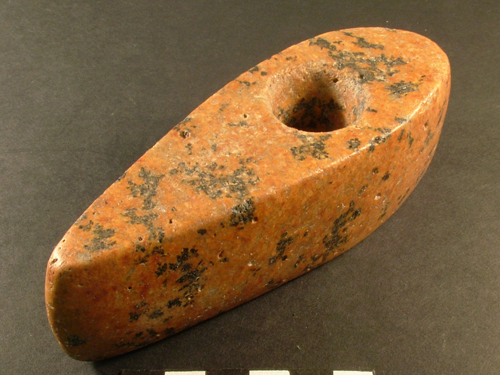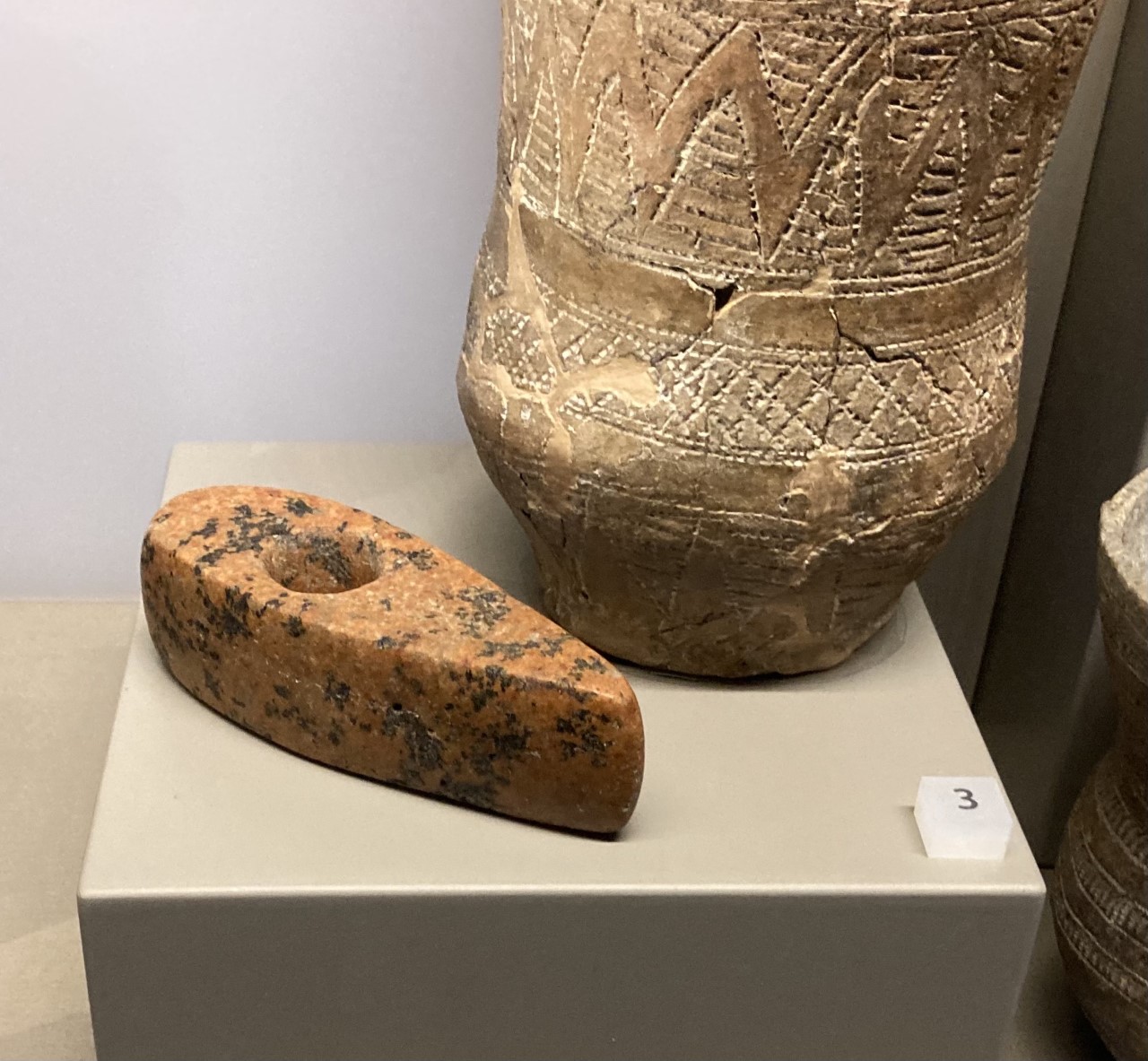Ceremonial Battle-Axe
Volunteer Olly gives us an insight into one of his favourite objects in the Museum...
This beautiful artefact is a perforated axe-head of tourmaline granite, red with olive green markings, the nearest source of the rock is Cornwall. It was excavated from a Beaker burial, revealed through aerial photography to the south of Woodhenge (Durrington 67). The grave also contained the crouched skeleton of a man and a beaker, excavated by Mrs M E Cunnington and Mr B H Cunnington, 1929.
The axe-head is magnificently formed with no sign of use, perhaps demonstrating that the it was created purely to be buried with this man as it is in an almost completely pristine state. At this time however (early Bronze Age – 2500-2000 BC) a metal palstave was a more widely used form of axe-head as, being made of a metal, it was more hard wearing than a stone counterpart which could be weathered. This perhaps suggests that the tourmaline granite of this axe-head is more special and was made for use in burial rights only.
The origin of the tourmaline granite also gives a fascinating insight into the lives of Bronze Age people. The closest example of this stone comes from Land’s End in Cornwall, though the axe-head itself was discovered over 200 miles away in a Beaker burial just south of Woodhenge! This suggest that trading, and the movement of people, was a feature of the society of Bronze Age Britain with people perhaps coming from Cornwall to the nearby settlement found at Durrington Walls and giving weapons or other goods to the local people, as a gift or as an offering of peace. Cornwall itself may have been a very important place at that time, having exceptionally rich tin deposits, however more research is required to look more deeply at the distribution of tin ingots from Cornwall. The trading of goods was not however limited within Britain, as some artefacts have been found abroad, suggesting that trade or the movement of people occurred at this time, and even earlier. One such artefact, a Jadeite axe (also housed in the Wiltshire Museum), came all the way from the Italian Alps and was found in Hampshire – demonstrating the extensive movement of objects and people!
Overall, this is an exquisite example of an early Bronze Age axe-head, and poses interesting questions about the life of Bronze Age people. It seems to be more ceremonial and symbolic than serving any military purpose, showing no sign of use at all. The granite itself, originally from Cornwall, raises questions on the nature of trading in Bronze Age Britain. Thus, this is a fascinating artefact and can be found on display in the Museum's prehistoric galleries.
Article by volunteer Olly Turney



